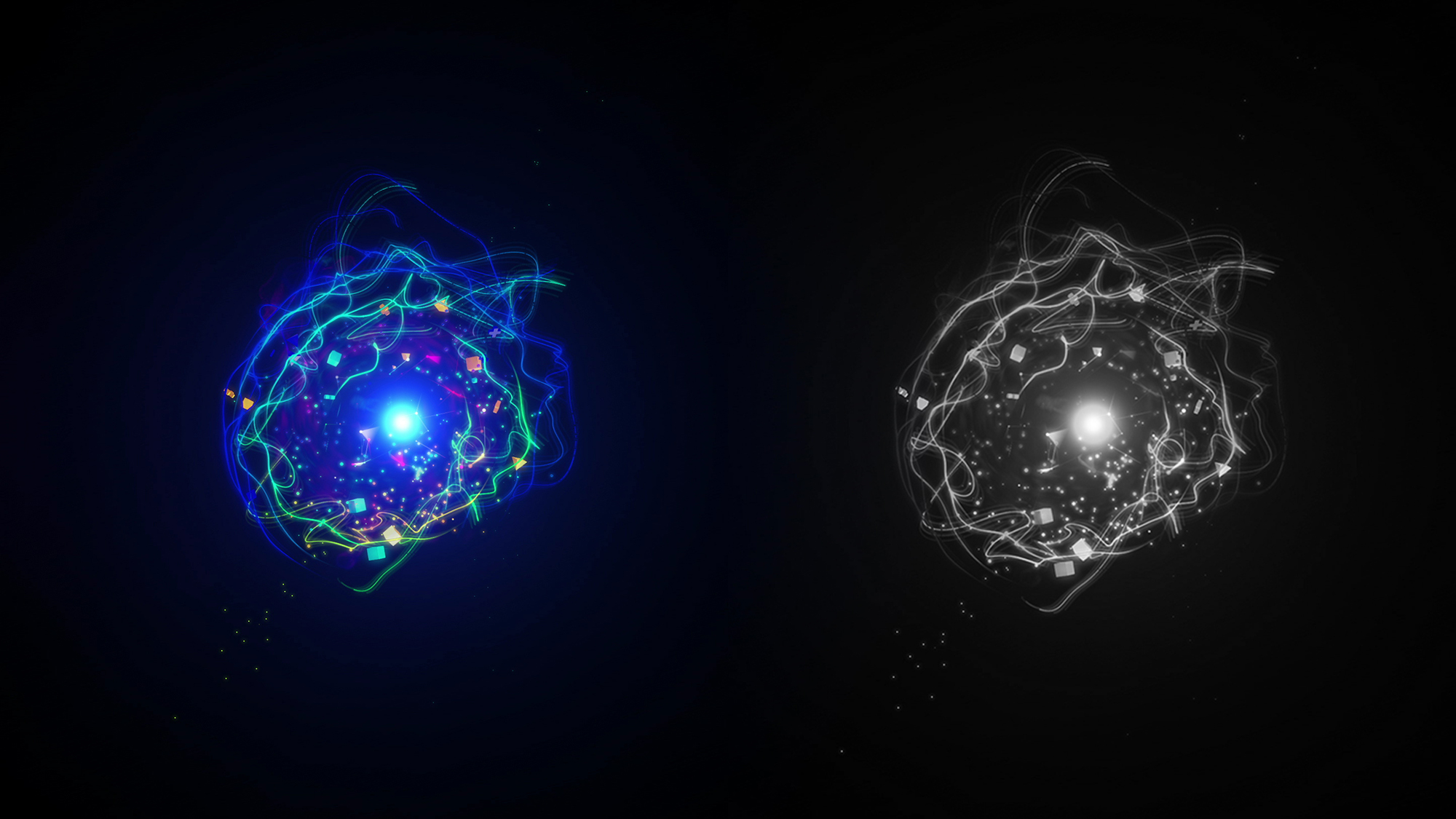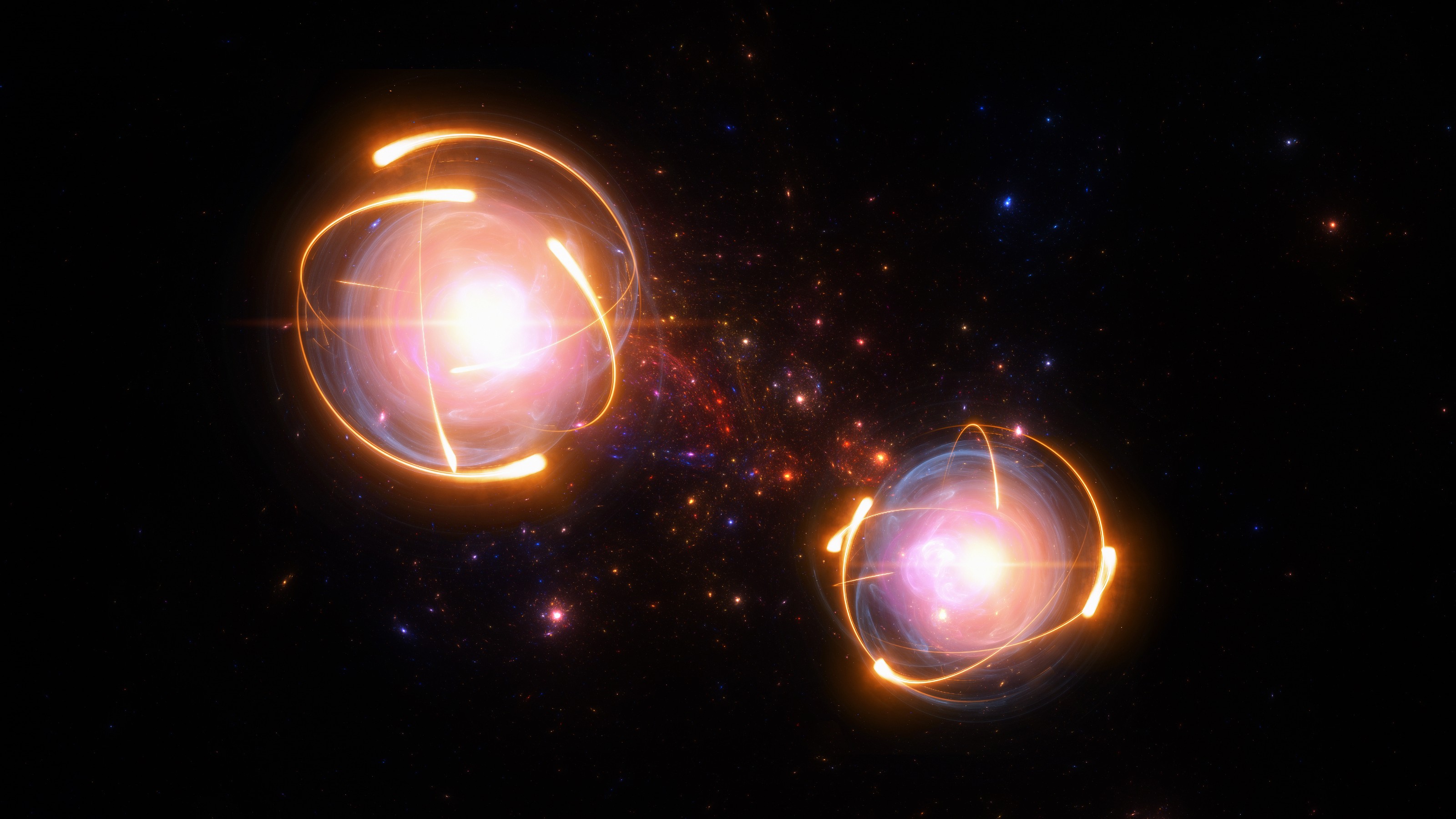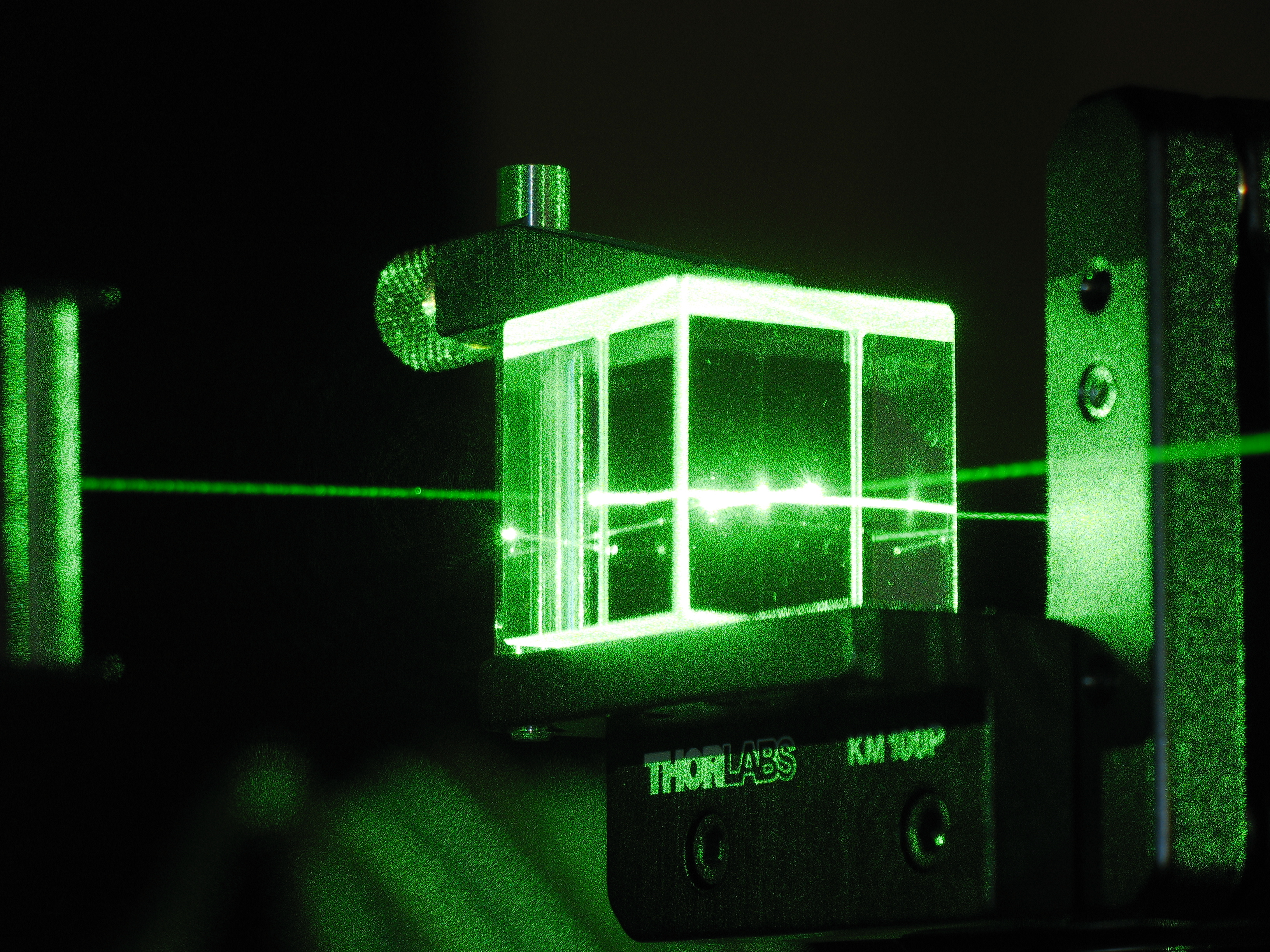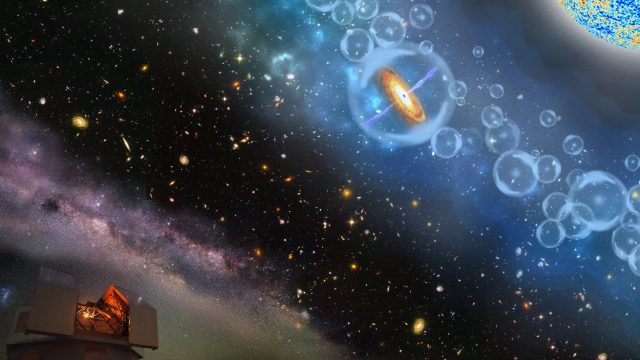Physics is in crisis. Quantum cosmology can save it and point us toward the theory of everything

- Heinrich Päs is a German theoretical physicist and professor at TU Dortmund University.
- In this excerpt from his book The One, Päs connects quantum physics to an ancient idea about the foundations of reality known as "monism."
- Arguing that physics is in crisis, Päs draws on science and philosophy to take a mind-expanding look at the nature of the universe, with his ultimate goal being to "save the soul of science."
Ever since the discovery of the atom, physicists adhered to the philosophy of reductionism. According to this idea, nature could be grasped in a unified understanding by decomposing everything around us into pieces made up from the same tiny constituents. According to this common narrative, everyday objects such as chairs, tables, and books are made of atoms, atoms are composed of atomic nuclei and electrons, atomic nuclei contain protons and neutrons, and protons and neutrons consist of quarks. Elementary particles such as quarks or electrons are understood as the fundamental building blocks of the universe.
Over the past fifty years, to work out and concretize this view, hundreds of thousands of pages have been filled with sophisticated equations full of strange symbols. To test these ideas, gigantic particle smashers have been built, tubes many miles long and worth billions of dollars, to accelerate subatomic matter close to the speed of light, let it crash together with violent impact, and search for even smaller or as-yet undiscovered pieces. With the help of NASA and the European Space Agency, engineering marvels have been launched into space to eavesdrop on the earliest incidents in the universe to understand how the world looked when it was but a soup of hot particles.
This philosophy has been tremendously successful, but there is a blind spot. Atoms, protons and neutrons, electrons and quarks are described by quantum mechanics. And according to quantum mechanics, it is, in general, impossible to decompose an object without losing some essential information. Particle physicists strive for a fundamental description of the universe, one that discards no information. But if we take quantum mechanics seriously, this implies that, on the most fundamental level, nature cannot be composed of constituents. The most fundamental description of the universe has to start with the universe itself.
Like any other professional physicist, I work with quantum mechanics on a daily basis. We use quantum mechanics to calculate and predict the results of the experiments, observations, and problems that interest us, be it particle collisions in giant accelerators, scattering processes in the primordial plasma of the early universe, or the behavior of electric or magnetic fields in a solid-state lab experiment. But while we almost always adopt quantum mechanics to describe specific observations and experiments, we usually don’t apply it to the entire universe. This has a mind-boggling consequence. As I will argue in this book, once quantum mechanics is applied to the entire cosmos, it uncovers a three-thousand-year-old idea: that underlying everything we experience there is only one single, all-encompassing thing—that everything else we see around us is some kind of illusion.
Admittedly, the claim that “all is One” doesn’t sound like an ingenious scientific concept. On a first glance, it sounds absurd. Just look out the window. Most of the time there will be more than one car in the street. It takes two persons (at least!) for a love affair, “two or three” believers are required to hold a Mass, and twenty-two players are needed for a proper soccer game. Ages ago, astronomers convinced us that Earth is not the only planet in the universe, and today modern cosmology knows virtually innumerable stars.
But quantum mechanics changes everything. In quantum systems, objects get so completely and entirely merged that it is impossible to say anything at all about the properties of their constituents anymore. This phenomenon is known as “entanglement,” and while it was pointed out by Albert Einstein and collaborators some eighty years ago, it is only now getting fully appreciated. Apply entanglement to the entire universe and you end up with Heraclitus’s dogma “From all things One.”
“Hold on,” you may object. “Quantum mechanics applies only to tiny things: atoms, elementary particles, maybe molecules. Applying it to the universe doesn’t make sense.” You will be surprised to learn that there are increasingly many good hints that this conviction is wrong. Between 1996 and 2016 alone, six Nobel Prizes were awarded for so-called macroscopic quantum phenomena. Quantum mechanics seems to apply universally, a finding whose consequences are just starting to be explored.
You may throw up your hands and protest that such a discussion is pointless. Physics seems to work just fine without any such metaphysical pondering. Fact is, it doesn’t. At present, physics is facing a crisis that forces us to reconsider what we understand as “fundamental” in the first place. Right now, the most brilliant particle physicists and cosmologists are alienated by experimental findings of extremely unlikely coincidences that so far defy any explanation. At the same time, the quest for a theory of everything is bereaving physics of its foundational concepts, such as matter, space, and time. If these are gone, what remains?
Quantum cosmology implies that the fundamental layer of reality is made neither of particles nor of tiny, vibrating, one-dimensional objects known as “strings,” but the universe itself—understood not as the sum of things making it up but rather as an all-encompassing unity. As I will argue, this notion that “all is One” has the potential to save the soul of science: the conviction that there is a unique, comprehensible, and fundamental reality. Once this argument holds sway, it will turn our quest for a theory of everything upside down—to build up on quantum cosmology rather than on particle physics or string theory (currently the most popular candidate for a quantum theory of gravitation). Such a concept further implies the need to understand how it is possible that we experience the world as many things if everything is “One,” after all. This is ensured by a process known as “decoherence,” which is essential to virtually any branch of modern physics. Decoherence is the agent protecting our daily-life experience from too much quantum weirdness. And it realizes the rest of Heraclitus’s tenet: “from One all things.”
As a consequence, we will have to work out how such a notion changes our perspective on philosophy’s deepest questions—“What is matter? ” “What is space? ” “What is time? ” “How did the universe come into being?”—and even on what religious people call “God” (since for centuries, the concept of an all-encompassing unity was identified with God). We will also have to confront why monism is not more popular, if it follows so straightforwardly from quantum mechanics. Why does it sound so bizarre to us? Where does our intuitive, deprecative reflex come from? To really understand this bias, we have to venture into the history of monism.
The One is the story of both a serious crisis in physics and the half-forgotten concept that has the potential to resolve it. It explores the idea that “all is One,” that matter, space, time, and mind are all just artifacts of our coarse-grained perspective onto the universe. Along the way it narrates how the concept evolved and shaped the course of history, from ancient times to modern physics. Not only did monism inspire the art of Botticelli, Mozart, and Goethe, but it also informed the science of Newton, Faraday, and Einstein. Even now, monism is becoming a tacit assumption underlying our most advanced theories about space and time. This is a story full of love and devotion, fear and violence—and cutting-edge science. In no small way, this is the story of how humanity became what it is.





